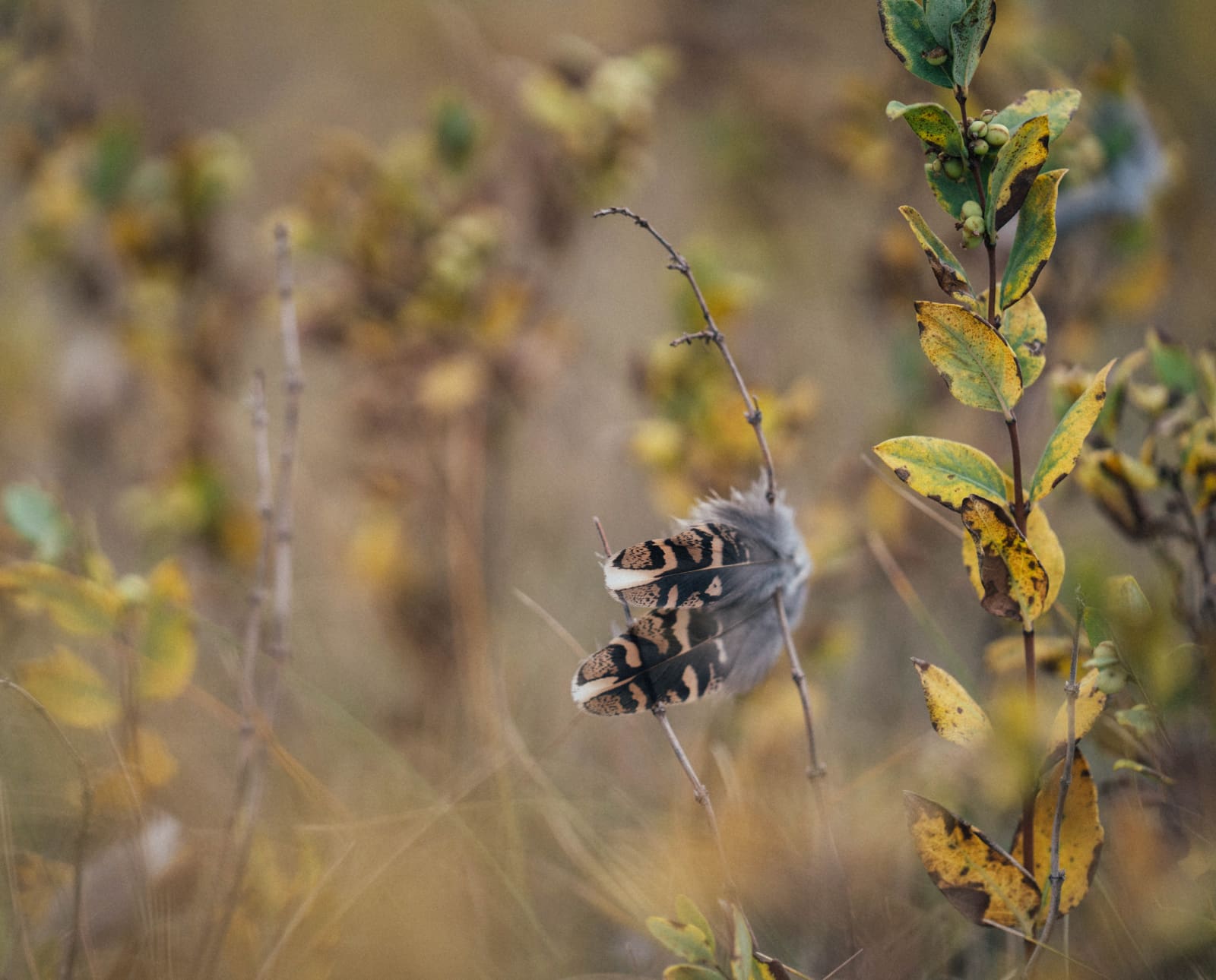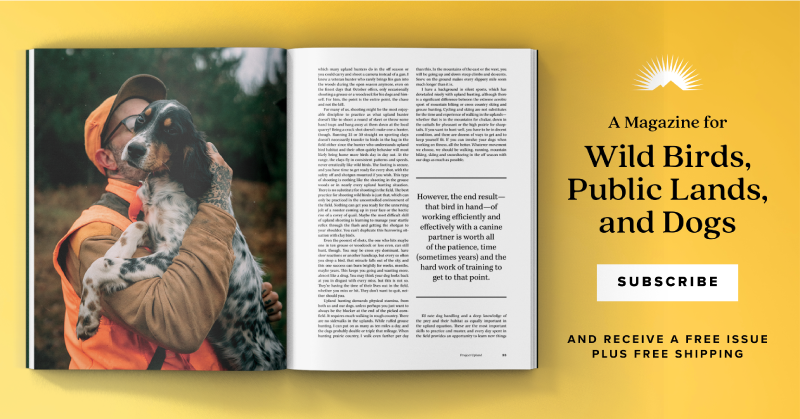Sharp-tailed grouse are a extremely adaptable species that make the most of all kinds of plant species for meals and canopy all year long.
Usually talking, grassland grouse are usually not probably the most adaptable critters. Each prairie hen species want massive expanses of grassland, whereas sage grouse will need to have massive expanses of sagebrush to thrive. The one exception to this rule is the sharp-tailed grouse.
Hearken to extra articles on Apple | Google | Spotify | Audible
Whereas usually thought-about a grassland species, sharpies vary from the shrub-scrub grasslands in Wisconsin by way of the huge prairies of the northern U.S. Nice Plains and Canada, culminating within the shrublands of Alaska. That’s an enormous geographic vary, encompassing all kinds of habitats, which means there are many vegetation which might be necessary to sharptails. That stated, some vegetation stand out above all others, and they’re discovered and utilized throughout most of this fowl’s huge vary.
Learn Extra: Full Information to Sharp-tailed Grouse Looking
Whereas the main focus of the article is on particular necessary vegetation, sure construction varieties comprise a matrix of vegetation which might be important to sharp-tailed survival. Let’s dive into these important vegetation and neighborhood buildings to raised perceive sharp-tailed grouse biology. As a bonus, we are able to use this data to turn out to be extra profitable sharptail hunters.
Plant Species Sharp-tailed Grouse Rely On
| Species | Identification | Kind of Plant | Relevance to Sharp-tailed Grouse |
| Little Bluestem (Schizachyrium scoparium) | Bunchgrass with bluish bases. Learn extra. | Grass | Nesting habitat, fall meals supply and loafing habitat |
| Sideoats Grama (Bouteloua curtipendula) | Grass that grows in bunches with distinctive oat-looking seeds that dangle to at least one aspect. Learn extra. | Grass | Nesting habitat, fall meals supply and loafing habitat |
| Wheatgrass (Triticeae spp.) | All kinds of grass species that develop in bunches and have flat leaves and small awns. Learn extra. | Grass | Nesting habitat, fall meals supply and loafing habitat |
| Ragweed (Ambrosia artemisiifolia) | Bushy plant with compound leaves and inexperienced flowers. Learn extra. | Forb | Brooding habitat and fall/winter meals supply |
| Annual Sunflower (Helianthus annuus L.) | Broad, stalking plant with massive yellow flowers and black or darkish brown heads. Learn extra. | Forb | Brooding habitat and fall/winter meals supply |
| Silvery Scurfpea (Pediomelum argophyllum) | Herbaceous plant with silver leaves and darkish blue or violet flowers. Learn extra. | Forb | Brooding habitat and fall/winter meals supply |
| Leadplant (Amorpha canescens) | Uncommon prairie shrub with spiky purple flowers and lots of delicate, delicate inexperienced leaves. Learn extra. | Forb transitioning right into a woody shrub because it ages | Brooding habitat and fall/winter meals supply |
| Prairie Rose (Rosa setigera) | Thorny, woody plant with five-petaled flowers in summer season and vivid crimson “hips” within the fall and winter. Learn extra. | Shrub that acts as a forb | Fall meals supply and canopy |
| Clover (Trifolium spp.) | Mat-forming leafy plant rising acquainted three-leafed sample. Learn extra. | Forb | Early spring meals supply |
| Alfalfa (Medicago sativa) | Perennial legume with trifoliate leaves and purple flowers. Learn extra. | Forb | Chick meals supply with excessive density of bugs |
| Snowberry (Symphoricarpos albus) | Fairly, brief woody plant with darkish inexperienced ovular leaves and white berry clusters within the fall. Learn extra. | Shrub | Summer season and winter cowl, fall meals supply |
| Buffaloberry (Shepherdia canadensis) | Nitrogen-fixing shrub with reverse, ovular leaves and fleshy crimson or yellow fruits. Learn extra. | Shrub | Summer season and winter cowl, fall meals supply |
| Cherry (Prunus spp.) | Woody plant with often toothed leaves and clean, reddish-brown bark with many lenticels. Learn extra. | Shrub or small tree | Summer season and winter cowl, fall meals supply |
| Hazelnut (Corylus americana) | Woody plant with jagged, ovular leaves that grows in thickets. Learn extra. | Shrub or small tree | Fall and winter meals supply and canopy on the fringes of sharptail habitat |
| Willow (Salix spp.) | Multi-stemmed, water-loving woody plant with linear, shiny leaves. Learn extra. | Ranges from groundcover to shrubs to small bushes | Fall and winter meals supply and canopy on the fringes of sharptail habitat |
| Japanese Cottonwood (Populus deltoides) | Riverbottom tree species with thickly grooved, corky bark and triangular, aggressively serrated leaves. Learn extra. | Tree | Winter meals supply |
| Quaking Aspen (Populus tremuloides) | Clonal tree species with white, powdery bark and round, serrated leaves. Learn extra. | Tree | Spring meals supply |
Nesting and Brooding Vegetation
Nesting and brood habitat is a various matrix of grasses and forbs, or weeds. Among the prime grasses sharp-tailed hens use for nesting are little bluestem, sideoats grama, and varied wheatgrass species. Little blue and sideoats are warm-season grasses and kind clumps wherein hens can conceal nests. Wheatgrasses are cool-season species, which means they develop earlier within the spring and permit for early nesting cowl. Massive areas of those grasses are additionally critically necessary for fall feeding and loafing areas, which means they’re nice locations to focus on come searching season.
Very important to the success of this whole reproductive journey is correct brood habitat. Tiny younger broods want naked floor between vegetation to remain dry and tons of bugs to develop rapidly. Vegetation like frequent ragweed, annual sunflower, silvery scurfpea, and leadplant (my all-time favourite plant) present this sort of habitat, plus produce nutritious seeds for fall and winter. Above all these is the prairie rose.
Whereas thought-about a woody plant or shrub, prairie roses functionally function forbs as a result of they develop low to the bottom. Within the fall, they produce a nutritious fruit referred to as hips. Prairie rose hips are very nutritious and are excessive in vitamin C. The plant is extremely wanted for its meals worth and the occasional cowl it offers. The truth is, rose hips are so necessary to sharpies I wager that almost all birds shot in native grasslands could have hips of their crop or abdomen contents.
Rose hips might also serve one other operate. Researchers within the higher Midwest speculated they operate as grit the place small pebbles are uncommon. Rose hips present in gizzards of harvested birds led to this conclusion.
All these species happen in a matrix on native grassland landscapes, permitting birds to journey solely brief distances to search out accessible meals and canopy. Nonetheless, forms of nonnative vegetation can be essential for sharptails, particularly nesting hens and broods. As hens are increase their physique situation for the arduous process of manufacturing and laying a full clutch of 10 to 14 eggs, they want early-growing vegetation which might be excessive in vitamin. Clover, as an example, is excessive in protein and vitamin C, grows earlier than heat season forbs, and might be ubiquitous in locations.
One other excellent nonnative forb is alfalfa. Whereas I at all times promote the worth of native vegetation over nonnative ones, I imagine there isn’t a finer forb for grassland grouse chicks, together with sharptails, than alfalfa. Grouse hens journey lengthy distances to take their broods to alfalfa fields as a result of it has very nutritious leaves grouse eat as greens, and no different forb in sharpie vary produces extra bugs than alfalfa.
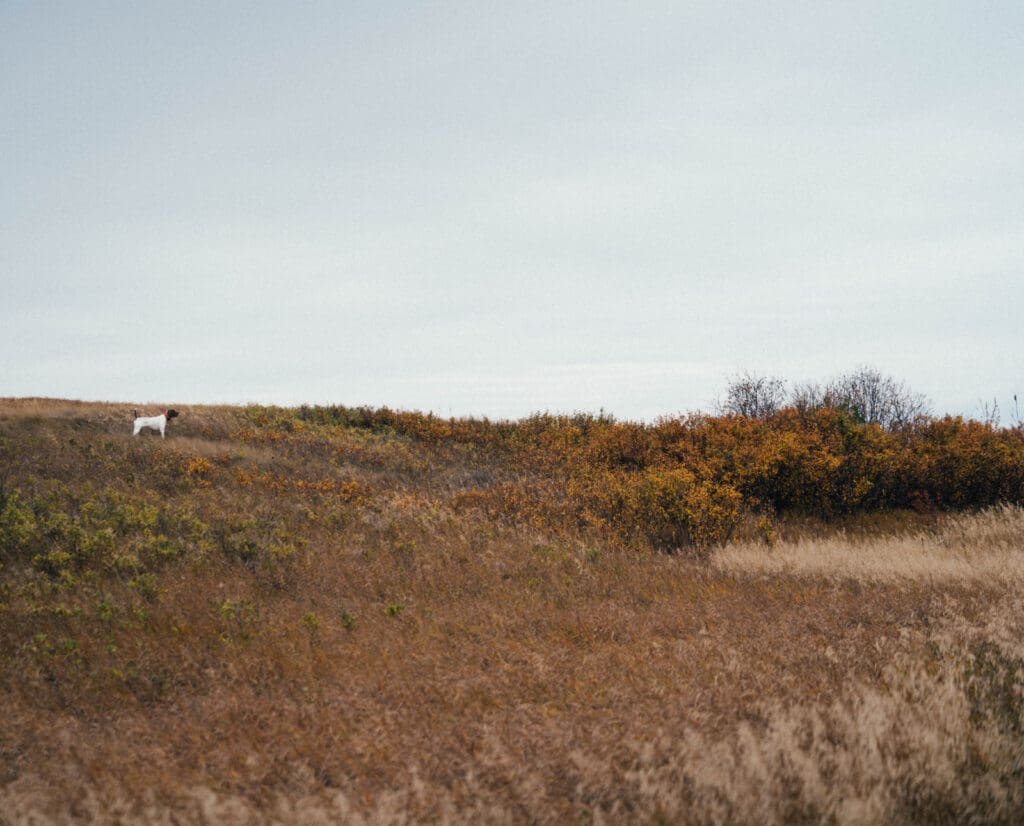
Shrubs Essential For Sharp-tailed Grouse Survival
Sharptails are the one prairie grouse that routinely use shrubs for canopy and meals, with the notable exception of the sage grouse, which, effectively, will need to have sagebrush. Shrubs are so essential to sharptails that they’re a habitat requirement in a lot of their vary.
The highest shrubs throughout the northern Nice Plains are snowberry, buffaloberry, and a few species of cherries. These shrubs are thicket-forming and are sought out for summer season and winter thermal cowl and safety from predators. In addition they produce fruit relished by grouse as fall and early winter meals sources.
Shrub thickets might be discovered scattered throughout the prairie, particularly in coulees, swales, and slopes. Grouse like to loaf in them noon. Anytime you run throughout these thickets, they’re must-hunt spots; method them anticipating a flush.
In different places, sharptails feed on the autumn catkins and winter buds of hazelnut and willow. These are extra necessary on the japanese fringes of their vary up into Alaska. Not solely do they supply meals, however these shrubs and others present invaluable cowl from predators.
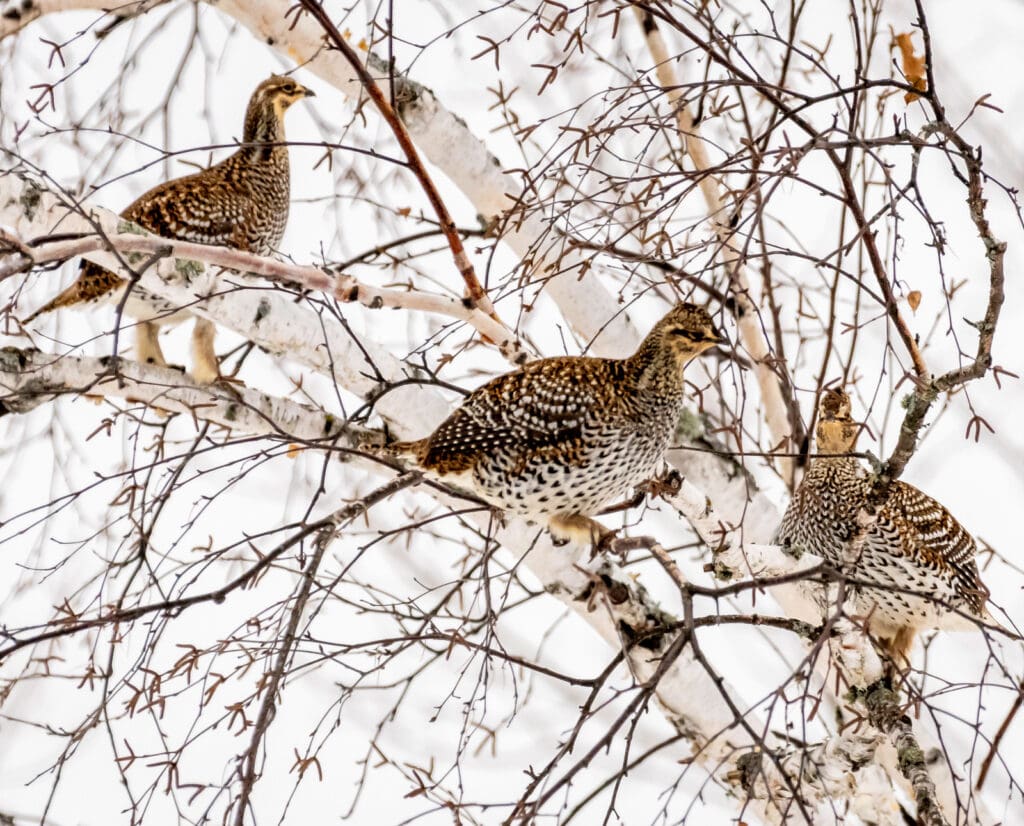
Essential Tree Species In Sharptail Habitat
Bushes, you say?! With all of the concentrate on the unfavourable results of bushes on prairie grouse species, you would possibly suppose I’m foolish to say bushes are necessary vegetation for sharpies. However let me clarify. Actually, not all bushes are helpful; cedars are an instance of a shrub species that may be very detrimental to sharptail habitat. Nevertheless, sure species present invaluable meals sources within the late winter and early spring when the snow is deep and ground-based meals is unavailable.
One glorious tree species for sharptails is japanese cottonwood. These bushes produce a winter bud that’s extremely wanted by grouse. I’ve seen massive numbers of sharpies budding in cottonwood bushes in North Dakota, and this conduct is extensively noticed and photographed. The perching birds at all times have a sentry searching for hazard and are extraordinarily troublesome for a hunter to method; ask me how I do know.
Birds will journey from miles round to remoted clumps or rows of cottonwood. The remoted nature of most cottonwood stands doesn’t have a lot affect on sharptail survival. Different species of bushes scattered throughout massive acres of grassland habitat could be a downside.
One other tree that’s invaluable to sharptails is aspen. Quaking aspens produce a nutritious and available bud. Plus, the newly rising inexperienced leaves of spring present good forage. Aspens are most generally utilized by birds that reside within the intermountain west, northern Canada, and Alaska, in addition to excessive grassland landscapes at their interface with forests.
A portion of the sharp-tailed grouse inhabitants in mountainous landscapes are considerably migratory. In these conditions, they transfer to areas with extra bushes, particularly aspen, to benefit from meals sources whereas those on their summer season vary are lined by snow.
Traditionally, a inhabitants of sharptail grouse migrated by the tons of into the Shirley Basin of Wyoming within the late 1800s to feed on the huge aspen sources there. Should you’ve lately been to Shirley Basin, you can see few massive stands of aspen and no sharptailed grouse, a testomony to a big discount of sharp-tailed grouse numbers within the final 100 years and landscape-level change in forest composition in that space resulting from a wide range of elements.
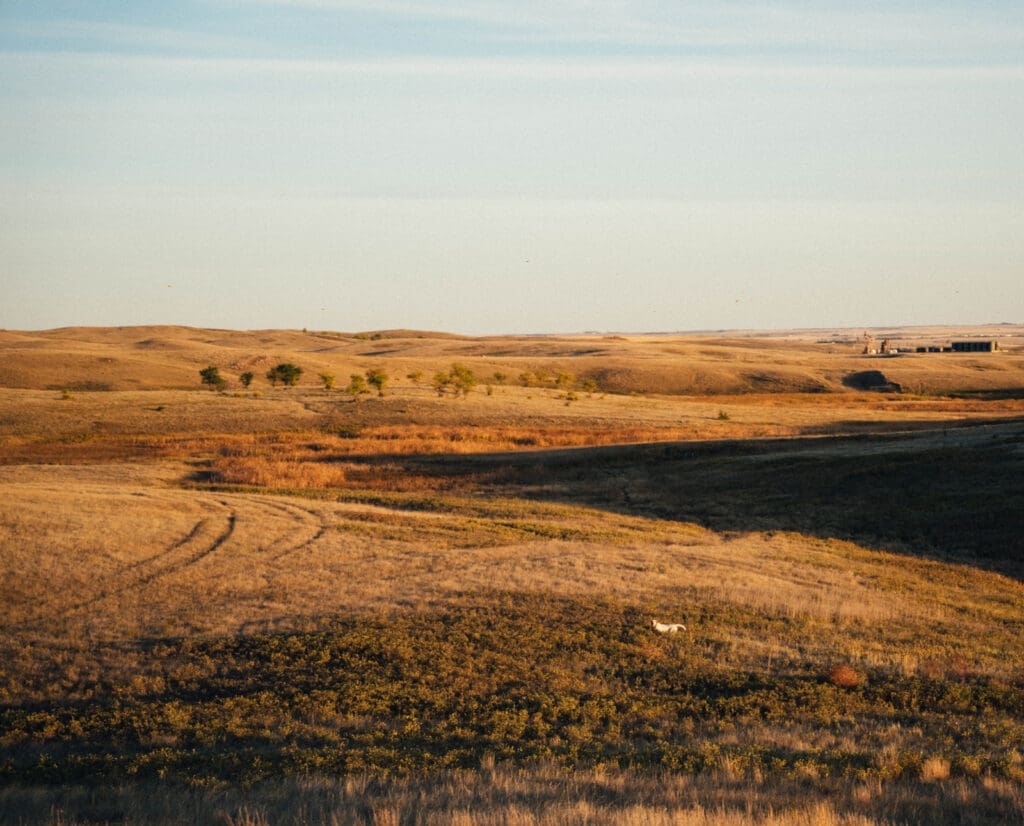
Sharptail Grouse Are An Amazingly Adaptable Prairie Grouse
I discover the adaptability of sharp-tailed grouse wonderful. Their means to search out sources to thrive from Nebraska to Alaska means they may doubtless be fairly profitable for a few years. That’s most likely why this species is probably the most quite a few and widespread of our prairie grouse species.
Regardless of the complexity of their habitat use, they’re nonetheless simple to search out and hunt so long as you goal the fitting combos of necessary plant species on the proper time of 12 months. Search for massive areas of grasslands with a lot of native forbs, particularly rose hips, and patches of alfalfa. Additionally, hunt each snowberry, buffaloberry, and cherry thicket you’ll find from midmorning by way of the afternoon. Should you hunt a migratory inhabitants that strikes in direction of aspen stands because the snow flies, hunt the grassland-aspen interface, anticipating birds to flush from the bushes and the grass.
Make cautious observations and take notes of areas the place these necessary vegetation exist whereas sharp-tailed grouse searching. Your data of sharptail ecology will develop, and so will your searching success.

